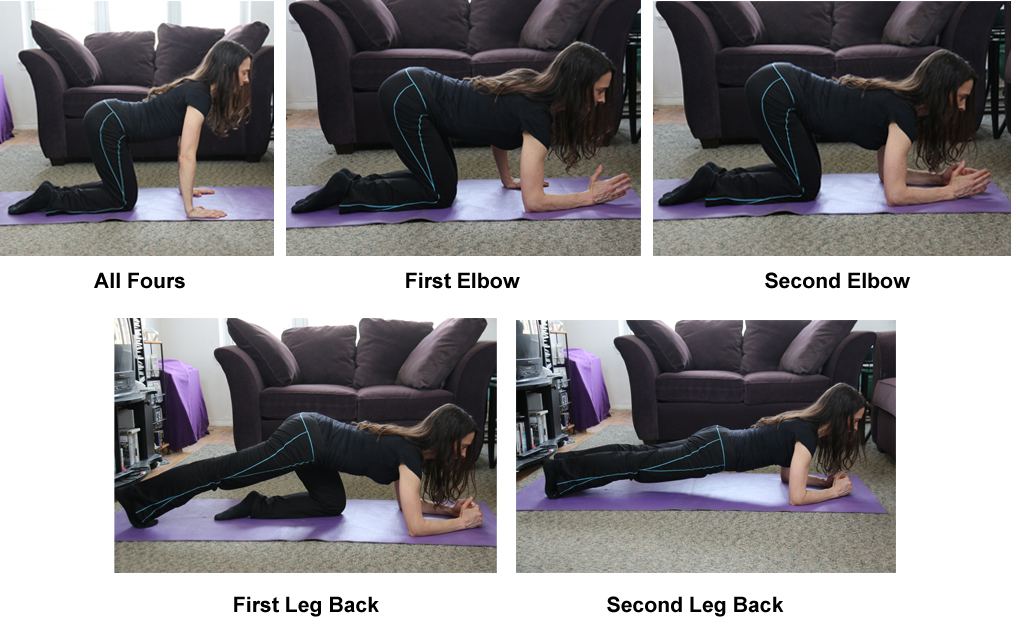Many people will go to the gym in hopes of “looking” better. Although we all want to be our best selves, working out for a “look” vs. overall strength and well-being can lead to imbalanced muscles, as well as other injuries. This can be especially true for those looking for a “flat stomach” or “washboard abs”. However, the true importance of abdominals is to strengthen and contain the organs in our central region, as well as support the spine, especially the lumbar region.
In Pilates, as well as in Yoga, our main focus is the Transverse Abdominus. A way to think of this: the saran wrap, or casing of a vegan sausage, that wraps all the way around, and holds everything together.
For this reason, many exercises are done in neutral spine, vs. merely moving one’s head up and down. In fact, many people injure their necks because they “pull on their heads”, and don’t even come up high enough to achieve enough forward flexion to have the desired result of abdominal contraction.
I have also encountered students who have had neck and spinal injuries that prevent them from curling up. Does that mean that abdominal strengthening is off the table? The answer is quite the opposite.
Plank is such a wonderful and functional exercise. Learning how to maintain one’s body in neutral spine plays into everything that a person does in daily life activities: from simple sitting and walking, to running and spinning. And you would NEVER want to lift a box in a rounded spine, so it is important to learn to TRAIN the body for real life.
When working with beginners, I will often use a raised box or platform to take the edge off, as having the chest inclined upward will help a new person ease into the idea of eventually having a horizontal line. However, remember that this is not a FLAT line by any means! The spine has 3 curves: the cervical spine (at the neck) has a concave curve, the thoracic spine (back of the rib cage) has a convex curve, and the lumbar spine (lower back) has a concave curve. And if you want to add a 4th, the pelvis/sacrum has a convex curve as well. Together, this “S” shape is what keeps a body “straight”.
To get started: Find and all fours position where you can feel “the suspender” action: when the base of your ribs and your pelvic bone will feel like they are aligned in the front. All your curves in your spine will be present. Your arms will be directly under the line of your shoulders.
At this point I will cue, “Elbow, elbow, leg, leg”. Place one elbow on the mat or on the bench (if modifying), then the other, then walk one leg back straight, followed by the second. The elbows will still be right under the line of the shoulders. The Head will remain elongated (never hung, and DEFINITELY not hanging into one’s hands, hoping for it to be over). The chest is expanded, not rounded, as if you have a great necklace or t-shirt you want everyone to see. The feet are parallel, not spread apart. And although a strong plank will lead to a strong downdog, the BUTT is NOT above the chest. The opposite can be true, especially for a beginner on a box, or when doing the plank on straight arms, but sticking the butt up in the air takes away from the abdominals, and will eventually hurt one’s back and shoulders. Same is true for pelvic tucking/back rounding. The trick is to find and enjoy the neutral spine alignment.
As you progress, some fun variations on plank are:
- Gently lifting one foot off the floor a few inches, and placing back down. Doing 8-16 reps alternating legs.
- On straight arms (if on the mat), or on bent elbows (on a platform that is 2-4 risers high), gently bend one knee to 90 degrees, hold for a second, place back to parallel on the floor, and switch sides. Doing 8-16 reps alternating legs. This is NOT to be done as a run, as many people will lift their butt/hang their head/round their back. This is meant to be done in a slow and controlled manner for the most pain, I mean FUN!
- More advanced, you will see me do a plant on straight arms with my feet on a foam roller. Without changing out of neutral spine, I will gently roll the roller with my feet toward my midline, (about a 90 degree angle), and then extend back to the original plank, without letting my center sag. I do not do this on a ball as that would lift my butt. Again, it is better to have the chest higher than the hips, rather than the reverse.
Of course, plank does involve a bit of strength. Therefore, new students could simply go to an all fours and practice finding neutral spine. Or, to modify further, sit at the edge of a hard backed chair, and practice aligning one’s ribs and hips, and then containing the abdominals. Hold for a count of 5, and release.
In closing, abdominal strength is so much more than flat stomachs and washboard abs. Using the power of the plank, one can achieve true abdominal strength that will help with all sports and daily life activities.
Kama Linden has been teaching fitness for over 2 decades. She has taught strength, step, pilates, vinyasa yoga, senior fitness, and has worked with clients and students of all ages and fitness levels. She is certified by AFAA Group Exercise and NASM CPT, as well as 200 hour Yoga. She has a BFA in Dance from University of the ARTS. Her newest book is titled, “Healthy Things You Can Do In Front of the TV”. Visit her website, bodyfriendlyoga.com
